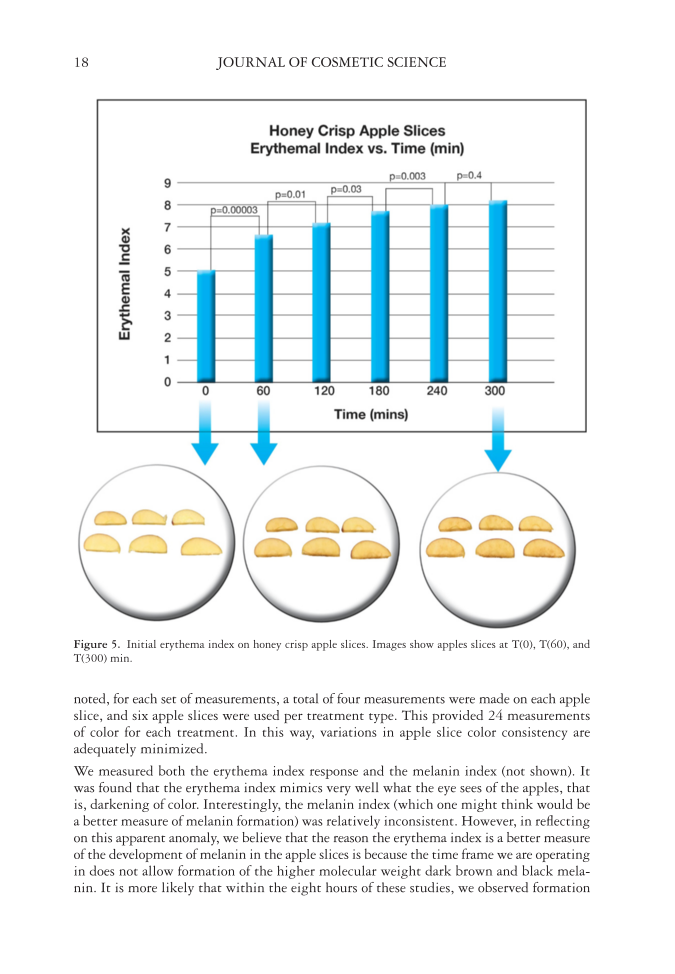EXAMINING SKIN-BRIGHTENING INGREDIENTS USING APPLE SLICES 17 and for the purposes of these studies, a 10% dispersion of the Jeesperse® OptiDerm™ A-Z was made in water. This provides an effective amount of azelaic acid of 2.5%. For th is study, two sets of six apple slices were used: one set was untreated and the other was treated with two cotton swab loadings of azelaic acid dispersion. After application of the dispersion on the six apple slices, the product was gently rubbed on the apple surface with a fi nger to give consistent coverage of the entire exposed surface of the apple (Figure 6). As noted in Figure 3, the ingredient is an emulsion, very similar to a fi nished product emul- sion. Application of the product on the apple surface is straightforward, suggesting that this test method may have applications in screening fi nished emulsion-based formulations. It was found that by placing the apple slices on paper towels, the pressure from the placement of the chromameter measuring head would not move the apple slices, which is important to gain adequate color measurements. Also, although coring the apples removes the seed elements, the apple slices can still maintain a small ring of color from the area around the seeds. For this reason, the color measurements were made along the upper surface of each apple slice, as shown in Figure 2, where the color was more uniform and consistent. As Figure 4. Initial erythema index on McIntosh apple slices. Images show apple slices at T(0), T(75), and T (1,020) min .
JOURNAL OF COSMETIC SCIENCE 18 noted, for each set of measurements, a total of four measurements were made on each apple slice, and six apple slices were used per treatment type. This provided 24 measurements of color for each treatment. In this way, variations in apple slice color consistency are adequately minimized. We mea sured both the erythema index response and the melanin index (not shown). It was found that the erythema index mimics very well what the eye sees of the apples, that is, darkening of color. Interestingly, the melanin index (which one might think would be a better measure of melanin formation) was relatively inconsistent. However, in refl ecting on this apparent anomaly, we believe that the reason the erythema index is a better measure of the development of melanin in the apple slices is because the time frame we are operating in does not allow formation of the higher molecular weight dark brown and black mela- nin. It is more likely that within the eight hours of these studies, we observed formation Figure 5. I nitial erythema index on honey crisp apple slices. Images show apples slices at T(0), T(60), and T( 300) min.
Purchased for the exclusive use of nofirst nolast (unknown) From: SCC Media Library & Resource Center (library.scconline.org)


























































